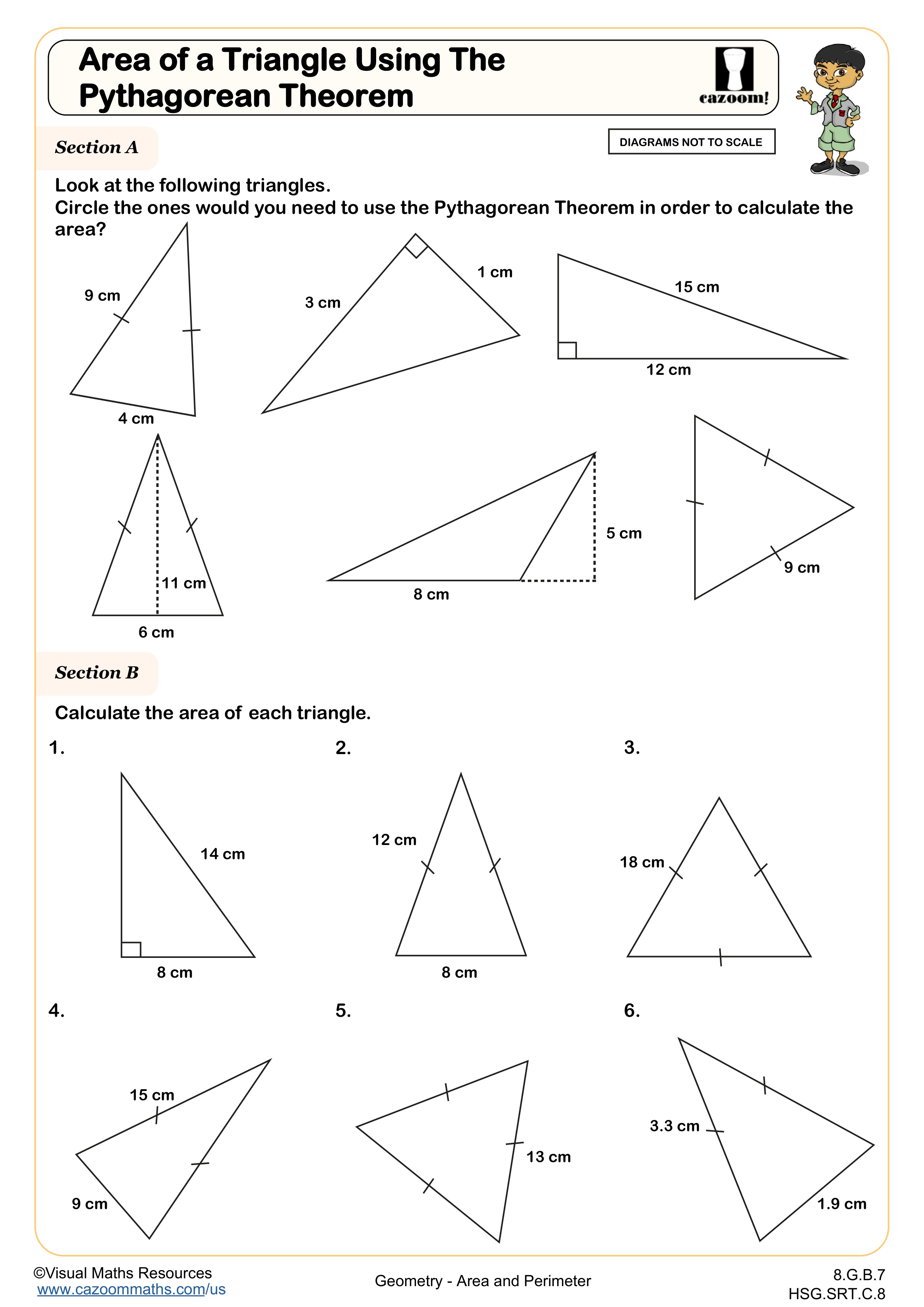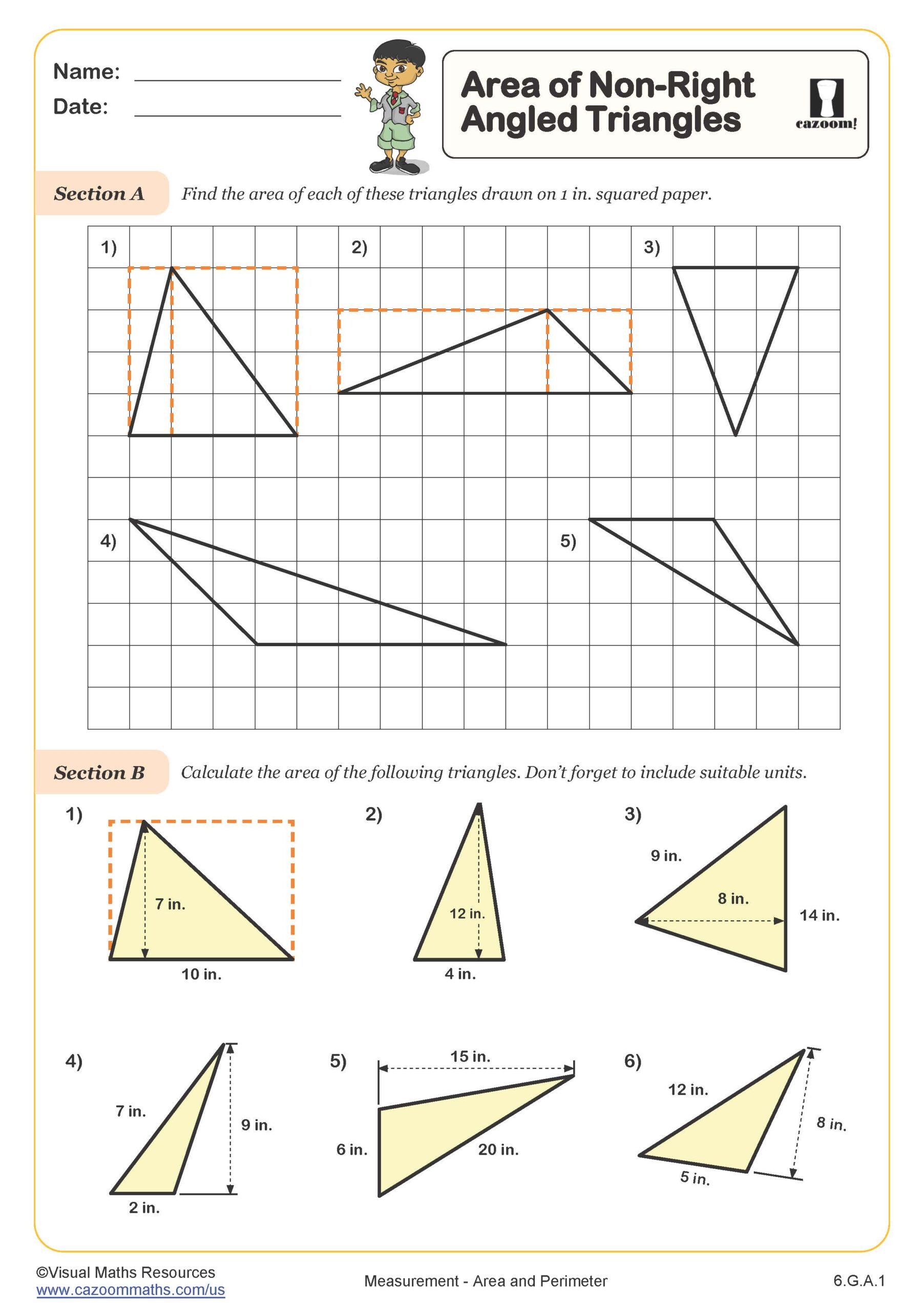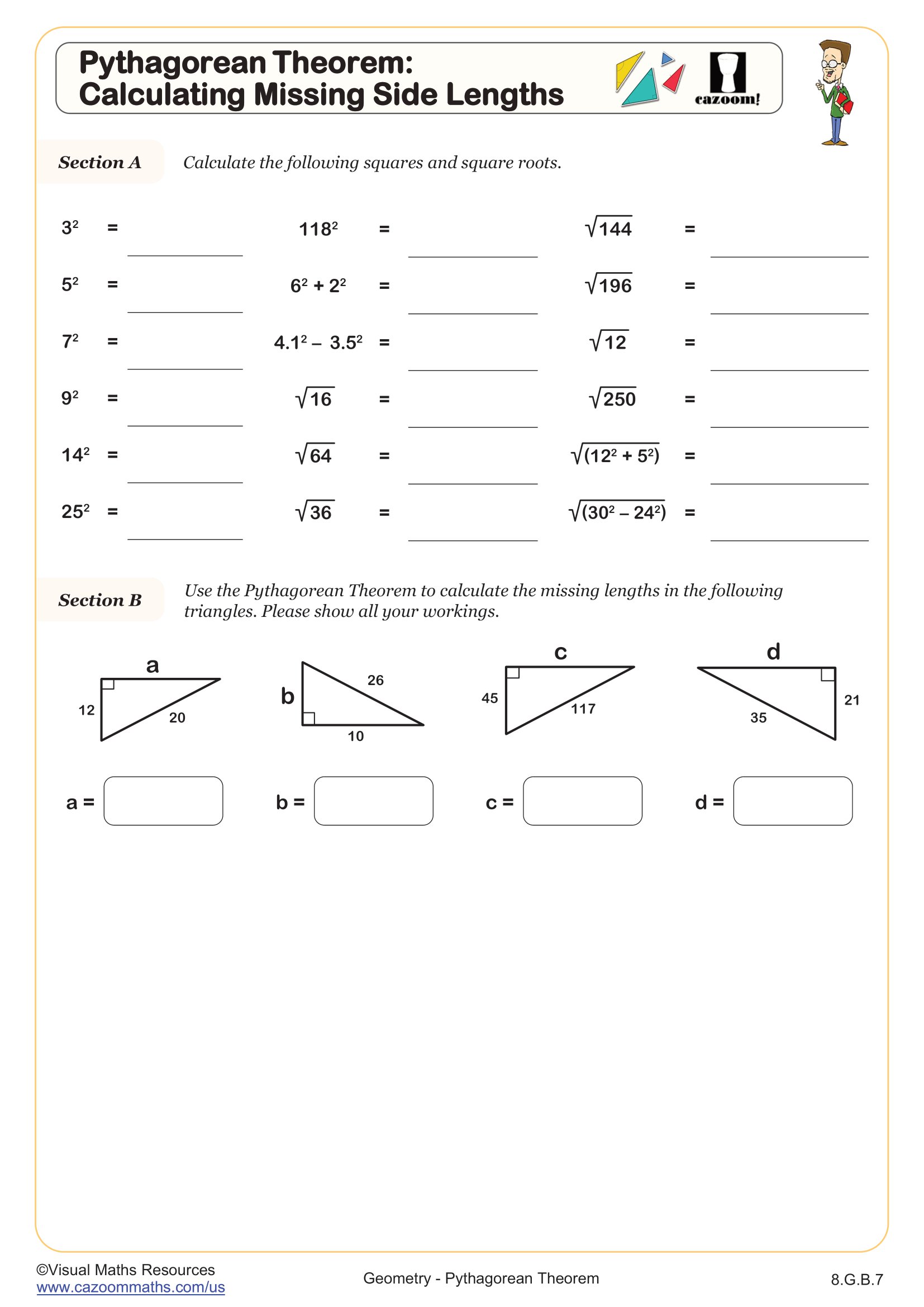Back to:
Area of a Triangle Using The Pythagorean Theorem WORKSHEET
Suitable for Grades: 8th Grade, IM 2
CCSS: 8.G.B.7, HSG.SRT.C.8
CCSS Description: Apply the Pythagorean Theorem to determine unknown side lengths in right triangles in real-world and mathematical problems in two and three dimensions.
Use trigonometric ratios and the Pythagorean Theorem to solve right triangles in applied problems.
Use trigonometric ratios and the Pythagorean Theorem to solve right triangles in applied problems.
Area of a Triangle Using The Pythagorean Theorem WORKSHEET DESCRIPTION
This worksheet helps students practice finding the area of a triangle using Pythagoras’ Theorem.
In Section A, students are shown a variety of triangles and must decide which ones require Pythagoras’ Theorem to work out the area. This encourages critical thinking and reinforces understanding of when Pythagoras’ Theorem can be used to find either the base or the height as required.
In Section B, learners are asked to calculate the area of several labeled triangles: including right triangles, equilateral, and isosceles triangles. The Pythagorean Theorem is needed to find missing side lengths before calculating the area in all cases. Diagrams are clearly laid out and varied in complexity.
In Section A, students are shown a variety of triangles and must decide which ones require Pythagoras’ Theorem to work out the area. This encourages critical thinking and reinforces understanding of when Pythagoras’ Theorem can be used to find either the base or the height as required.
In Section B, learners are asked to calculate the area of several labeled triangles: including right triangles, equilateral, and isosceles triangles. The Pythagorean Theorem is needed to find missing side lengths before calculating the area in all cases. Diagrams are clearly laid out and varied in complexity.


